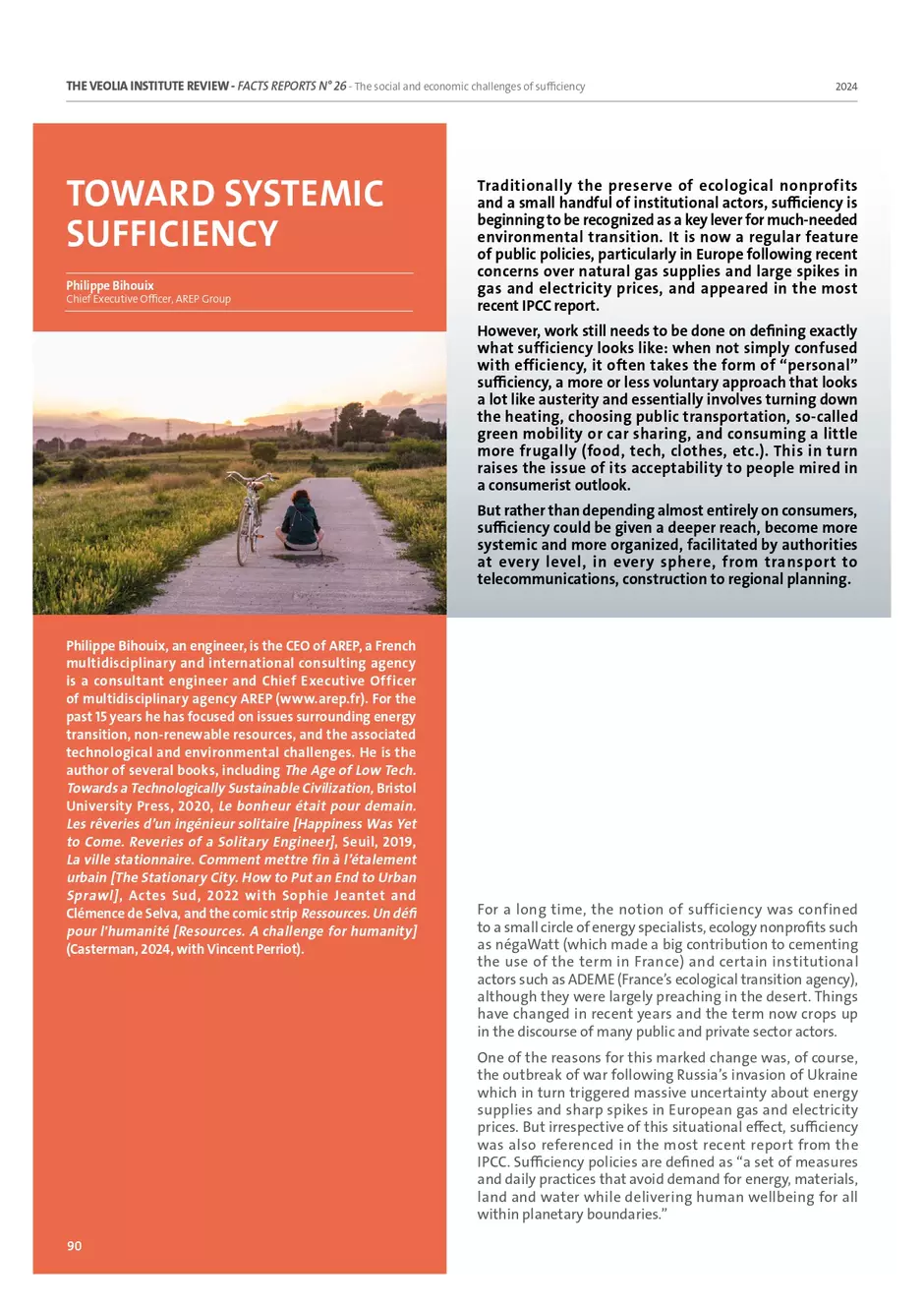Philippe Bihouix
Chief Executive Officer, AREP Group
Traditionally the preserve of ecological nonprofits and a small handful of institutional actors, sufficiency is beginning to be recognized as a key lever for much-needed environmental transition. It is now a regular feature of public policies, particularly in Europe following recent concerns over natural gas supplies and large spikes in gas and electricity prices, and appeared in the most recent IPCC report.
However, work still needs to be done on defining exactly what sufficiency looks like: when not simply confused with efficiency, it often takes the form of “personal” sufficiency, a more or less voluntary approach that looks a lot like austerity and essentially involves turning down the heating, choosing public transportation, so-called green mobility or car sharing, and consuming a little more frugally (food, tech, clothes, etc.). This in turn raises the issue of its acceptability to people mired in a consumerist outlook. But rather than depending almost entirely on consumers, sufficiency could be given a deeper reach, become more systemic and more organized, facilitated by authorities at every level, in every sphere, from transport to telecommunications, construction to regional planning.



